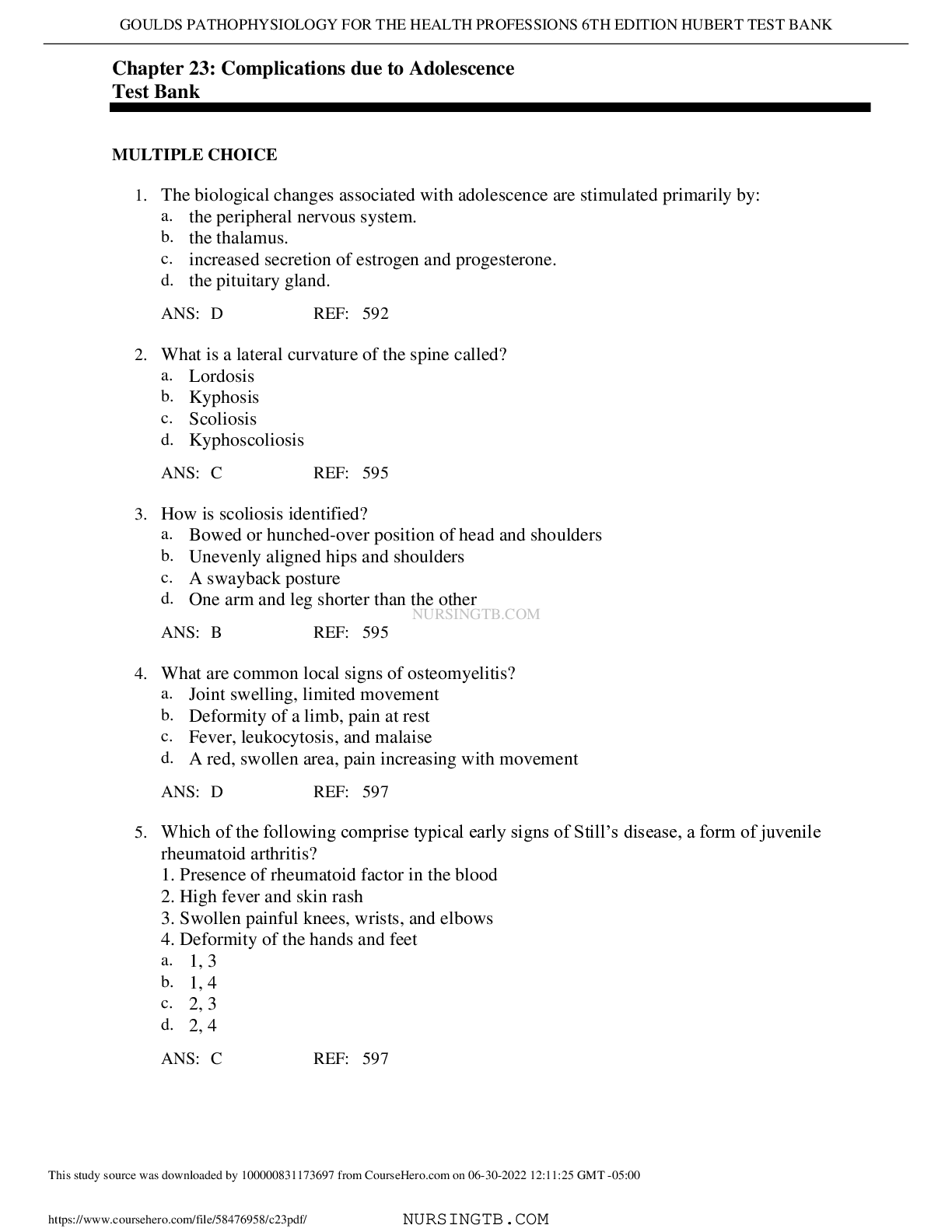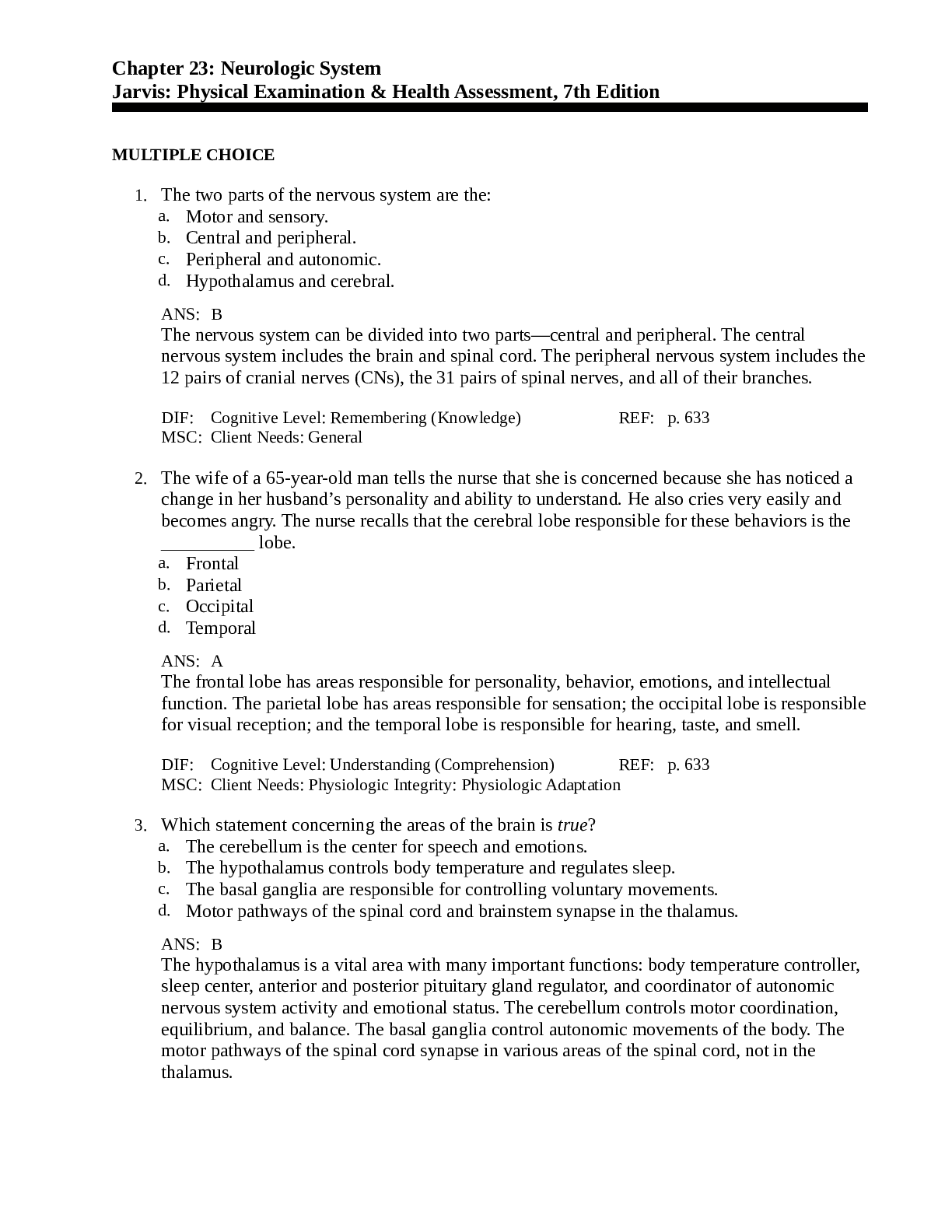Neurologic System Physical Examination & Health Assessment, 7th Edition by Jarvis
Course
Subject
Chemistry
Category
Questions and Answers
Pages
19
Uploaded By
ATIPROS
Preview 4 out of 19 Pages


Download all 19 pages for $ 10.00
Reviews (0)
$10.00
